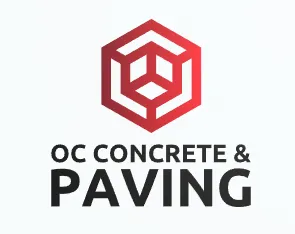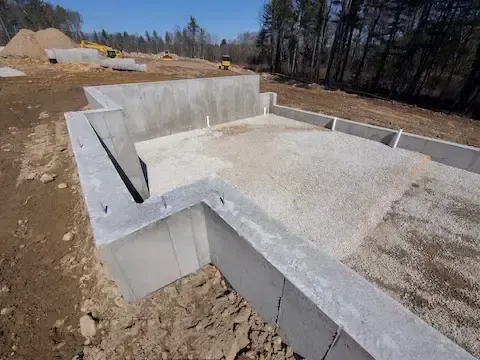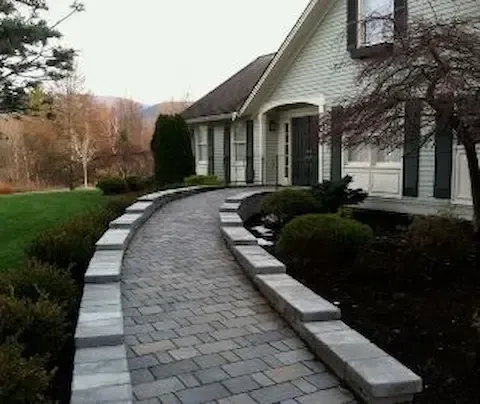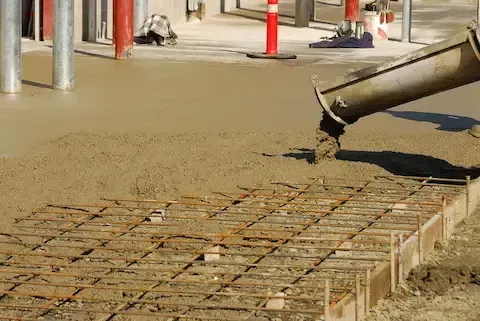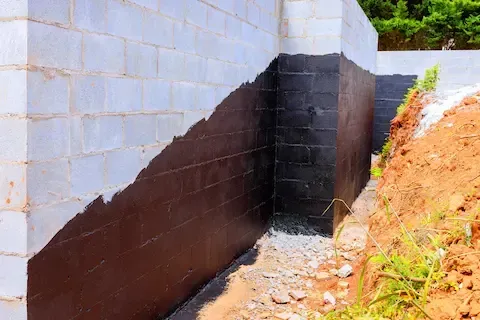Historic Building Foundation Restoration in Oregon City OR
Preservation-Sensitive Concrete Work for Historic Properties
Oregon City's historic downtown contains buildings dating back over a century—structures that require specialized knowledge when foundation work becomes necessary. We've worked on historic properties throughout the area, handling foundation repairs and upgrades that preserve historical integrity while meeting modern performance and code requirements. This work demands different approaches than new construction. Historic buildings often rest on rubble foundations or unreinforced concrete that would never pass current code. They may have settled unevenly over decades, creating structural challenges that require careful analysis. And any work must respect historical significance while ensuring occupant safety and building longevity. We work with property owners, architects, and historic preservation authorities to develop solutions appropriate to each situation.

Foundation stabilization addresses settlement and structural concerns using modern techniques adapted to historic construction. Seismic upgrades improve earthquake resistance while minimizing visual impact. And foundation repairs correct damage from water intrusion, soil settlement, or structural deterioration. Our historic foundation work includes thorough assessment of existing conditions and structural issues, coordination with engineers and preservation specialists as needed, repair and stabilization techniques appropriate to the building's construction, and minimal-impact methods that preserve historic fabric where possible. Whether you own a historic home in Oregon City's downtown district, manage a commercial historic property, or need foundation work on any older building with historical significance, we bring the specialized knowledge this work requires—combining respect for historic preservation with the structural expertise necessary for long-term building stability.
What's Included in our Historic Building Foundation Restoration service?
Foundation Stabilization & Repair
Structural repairs addressing settlement, cracking, or deterioration in historic foundations using techniques appropriate to original construction methods and materials.
Seismic Upgrade Integration
Foundation improvements increasing earthquake resistance in historic buildings while preserving architectural character and minimizing impact on historic fabric.
Moisture & Drainage Solutions
Water management systems protecting historic foundations from ongoing moisture damage using period-appropriate methods adapted for long-term effectiveness.

Concrete Services Throughout Oregon City & Clackamas County
Concrete Solutions Engineered for Oregon's Climate
Our concrete services extend throughout Clackamas County, bringing the same expertise and quality standards to every community we serve. We're familiar with soil conditions, drainage challenges, and building requirements across the area, having completed projects in diverse locations from riverfront properties to hillside developments. Whether you're in Oregon City's historic downtown, the West Linn hills, Lake Oswego neighborhoods, or outlying communities, we deliver concrete work engineered for your specific location's conditions and requirements.
Proudly serving West Linn, Lake Oswego, Milwaukie,
Gladstone and Wilsonville for 15+ years.
Frequently Asked Questions
Concrete Contractor can be complex, and we’re here to provide answers to common questions. Here are some frequently asked questions from our clients.
Frequently Asked Questions about concrete services
How long does concrete take to cure in Oregon's climate?
Concrete reaches initial set (hard enough to walk on) within 24-48 hours in typical conditions, but curing is a longer process. Concrete achieves about 70% of design strength at 7 days and reaches full strength at 28 days. Oregon's cooler, wetter climate can slow this process—cold temperatures delay curing while our frequent rain actually benefits curing by preventing too-rapid moisture loss. For practical purposes: light foot traffic after 24-48 hours, furniture and planters after 7-10 days, vehicle traffic on driveways after 7 days for cars (14 days for heavier vehicles), and heavy loads or sustained use after 28 days. Cold-weather installations require longer cure times. We protect fresh concrete from rain, temperature extremes, and rapid drying during initial curing—this affects timeline but ensures proper strength development. Sealing typically waits 28-60 days to allow moisture release. The specific timeline for your project depends on concrete mix design, weather conditions, and intended use—we'll provide guidance based on your situation.
What causes concrete to crack and can it be prevented?
Some concrete cracking is inevitable—concrete shrinks slightly as it cures, and thermal expansion/contraction creates stress—but proper installation minimizes cracking and controls where cracks occur. Major causes of problematic cracking include inadequate or poorly compacted base (allowing settlement), insufficient reinforcement for site conditions and loads, lack of control joints (which force cracks to occur in predetermined locations), poor concrete mix or placement techniques, and inadequate curing. Oregon-specific factors include freeze-thaw damage from water penetration, soil movement from our wet climate, and tree roots disturbing the base. Prevention requires comprehensive approach: proper site evaluation identifying potential issues, adequate base preparation with thorough compaction, appropriate reinforcement (wire mesh or rebar) for your specific situation, strategically placed control joints, quality concrete mix designed for our climate, and good drainage preventing water-related problems. Even with perfect installation, hairline cracks may develop—that's normal concrete behavior. But proper installation prevents the large structural cracks that affect performance and appearance. We focus on controlling cracking rather than claiming we can eliminate it entirely.
Do I need a building permit for concrete work in Oregon City?
Permit requirements depend on project scope and type. Generally, you need permits for concrete foundations (all new building foundations require permits as part of overall construction), structural retaining walls (typically those exceeding 4 feet in height), and commercial concrete work (most commercial installations require permits and inspection). You typically don't need permits for residential driveways, patios, or walkways (though some exceptions exist for historic district properties or environmentally sensitive areas). Concrete repairs generally don't require permits unless they involve structural elements. When in doubt, check with Oregon City Building Department before starting work—they can provide definitive answers for your specific project. Working without required permits creates problems: no inspection to verify quality, potential issues when selling property or filing insurance claims, and possible requirement to remove unpermitted work. We handle permit applications when required, coordinate inspections, and ensure work meets code requirements. Don't work with contractors who suggest skipping required permits to save money or time—proper permits protect your investment and ensure work meets safety standards.
Can you work during winter in Oregon City?
Yes, concrete installation is possible during Oregon City's winter months with appropriate precautions and techniques, though scheduling becomes less predictable due to weather. Concrete requires temperatures above 40-50°F during placement and initial curing (specific requirements depend on concrete mix and protection methods). We monitor weather forecasts closely and only pour when conditions support proper curing. For winter work, we use cold-weather concrete mixes with accelerators that cure at lower temperatures, provide temporary heating or insulation blankets protecting fresh concrete from freezing, and plan pours for warmer parts of days when possible. Winter concrete typically costs slightly more due to these additional precautions and materials. And scheduling is less certain—we may need to postpone pours when weather doesn't cooperate. For non-emergency projects, most homeowners find spring through fall scheduling more straightforward. But when winter work is necessary (foundation work for construction schedules, urgent repairs, commercial projects with deadline requirements), we can execute quality installations using proper cold-weather techniques. The key is working with experienced contractors who understand concrete's temperature requirements and won't compromise quality to maintain aggressive schedules.
How much does concrete cost in Oregon City?
Concrete costs vary significantly based on project specifics, but typical residential work in Oregon City ranges from $8-15 per square foot for basic flatwork (driveways, patios) and $12-20+ per square foot for decorative options (stamped, colored, exposed aggregate). Foundations and structural work typically cost more due to engineering requirements and complexity. Several factors affect pricing: site accessibility (difficult access increases costs), site preparation requirements (removing existing concrete, extensive grading, poor soil conditions), concrete thickness and reinforcement (heavier-duty installations cost more), finish type (decorative finishes add cost over standard broom finish), drainage work (French drains, slope corrections, etc.), and project size (larger projects often have lower per-square-foot costs). These are rough ranges—actual costs require site evaluation. We provide free on-site estimates that account for your specific conditions and requirements. Be cautious of quotes significantly below typical ranges—they likely indicate inadequate base preparation, insufficient reinforcement, or other shortcuts that save the contractor money but compromise your concrete's performance. Quality concrete installation isn't cheap, but it costs far less than replacing failed work in a few years.
What's your service area beyond Oregon City?
We serve Oregon City and surrounding Clackamas County areas including West Linn, Lake Oswego, Milwaukie, Gladstone, Canby, Wilsonville, and nearby communities. Our service area extends roughly 20-25 miles from Oregon City, covering most of Clackamas County and portions of adjacent counties. For projects outside this primary area, we evaluate distance, project size, and scheduling to determine if we can provide service effectively. Larger commercial projects or specialized work (historic restoration, complex hillside installations) may justify traveling farther. Distance affects both our costs (travel time and logistics) and our ability to provide timely service for any warranty or follow-up needs. We prefer working within our established service area where we can maintain direct oversight and respond quickly if issues arise. If your project is outside our typical service area but you're interested in working with us, contact us to discuss—we'll provide honest assessment of whether we're the right choice for your location or recommend alternative contractors who serve your area well.
Frequently Asked Questions about Historic Building Foundation Restoration
What makes historic foundation work different from regular concrete work?
Historic foundations present unique challenges requiring specialized knowledge. First, original construction methods differ from modern practice—unreinforced concrete or rubble foundations, lime mortar rather than portland cement, different dimensional standards, and construction techniques no longer used. Work must respect these original materials and methods rather than simply applying modern techniques. Second, building codes create tension between historic preservation and current requirements—how do you strengthen an unreinforced foundation to meet seismic code while preserving historic fabric? This requires creativity and expertise beyond standard foundation work. Third, documentation and approval processes involve historic preservation authorities who review work for appropriateness, sometimes requiring specific approaches or materials. And fourth, access constraints are common in older buildings—tight clearances, occupied spaces, and restrictions on what can be modified. Our historic foundation work combines structural engineering knowledge with preservation sensitivity, understanding of period construction methods, and problem-solving experience dealing with constraints unique to older buildings. We consult with preservation architects and authorities, work within regulatory requirements, and find solutions that satisfy both structural adequacy and historic preservation goals. Not all concrete contractors can navigate these complexities successfully.
How do you strengthen historic foundations without destroying historic character?
Do historic preservation rules apply to my old house even if it's not officially designated?
It depends on location and specific circumstances. Officially designated historic properties (listed on National Register, local historic registers, or within designated historic districts) face regulatory review for exterior work and sometimes interior structural work. Oregon City's historic downtown district includes many properties subject to historic preservation review. If your property falls within the district, exterior foundation work visible from public right-of-way may require review for appropriateness. Properties outside designated areas typically face no special historic preservation regulations—standard building code applies regardless of age. However, if you're using special financing (historic preservation tax credits, certain grants, etc.), preservation requirements may attach as conditions of that funding even for non-designated properties. And properties eligible for designation but not yet listed may face restrictions if designation is being pursued. For Oregon City properties, we recommend checking with the Planning Department early in your project to understand whether preservation requirements apply. Even for properties without regulatory requirements, many owners choose preservation-sensitive approaches because they value their building's historic character. We can work within preservation standards whether they're legally required or personal preference.
Can you work on occupied historic buildings?
Yes, we regularly perform foundation work on occupied historic buildings, though this requires additional planning and coordination. Occupied work demands careful sequencing—we may need to work in phases that allow continued building use, schedule noisy operations during specific hours, or provide temporary support while modifying foundations. Access logistics become more complex—moving equipment through occupied spaces, protecting building contents and finishes, and working around tenant activities. Safety requires extra attention since building occupants and visitors present during work. And communication matters more—keeping occupants informed about schedule, expected disruptions, and safety precautions. For commercial historic buildings, we often perform work during off-hours or coordinate with business operations to minimize impact. For residential historic properties, we work with homeowners to understand their schedule constraints and tolerance for disruption. Some foundation work is incompatible with occupancy—if extensive excavation compromises building support, temporary relocation may be necessary while we install proper foundations. But many foundation repairs and upgrades can proceed while buildings remain occupied through careful planning and professional execution. We'll evaluate your specific situation, explain what's possible while occupied versus what might require temporary vacancy, and develop work plans that balance project needs with occupancy requirements.
Request Your Historic Restoration Quote
Comprehensive Concrete Contractor Services in Oregon City
Tailored to Your Needs
From residential driveways to commercial flatwork and specialized hillside solutions, we deliver concrete work engineered for Oregon's demanding climate. Our expertise spans drainage-critical installations near Willamette Falls, slope stabilization throughout Clackamas County, and preservation-sensitive work in Oregon City's historic downtown—all executed with attention to moisture management and long-term durability.
What Our Satisfied Clients Have to Say About Oregon City Concrete & Paving
We pride ourselves on delivering great results and experiences for each client. Hear directly from home and business owners who’ve trusted us with their Concrete Contractor needs.

We needed a new driveway and were overwhelmed by wildly different quotes and recommendations. This team took time to explain exactly what our property needed and why—walking us through soil conditions, drainage concerns, and reinforcement options. Their estimate was detailed and fair. The installation was professional, finishing on schedule despite challenging weather. Two years later, our driveway still looks perfect while our neighbor's cheaper installation is already showing cracks. Worth every penny for quality work done right.
Sarah T., Oregon City Homeowner

Our sloped property presented real challenges for a patio installation. Other contractors either couldn't handle the drainage and retaining wall work involved, or quoted prices we couldn't afford. These guys engineered a solution that worked within our budget—using terraced sections and integrated drainage that has performed flawlessly through three Oregon winters. They clearly understood hillside concrete work and delivered exactly what they promised. Highly recommended for challenging sites.
Mike R., West Linn

As a commercial property manager, I need concrete contractors who show up when scheduled, work efficiently, and meet inspection requirements without drama. This team has handled multiple projects for properties I manage—parking lot repairs, loading dock work, and foundation repairs—always delivering quality work on schedule. Their estimates are accurate, communication is excellent, and they understand commercial requirements. They've become my go-to concrete contractor for our Clackamas County properties.
Jennifer M., Commercial Property Manager
The Trusted Concrete Contractor Expert Near You
Ready to hear more about expert services at Oregon City Concrete & Paving?
Contact us today to receive a detailed, no-obligation quote.
Oregon City & the Portland Metro
Mon-Sat, 8am-6pm
Quick Links
